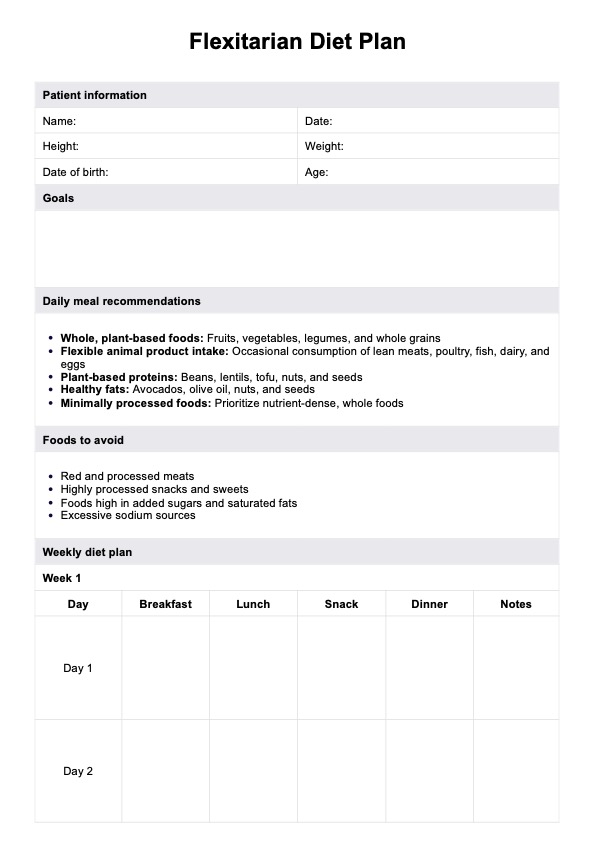A flexitarian meal plan focuses on plant-based meals with occasional inclusion of animal proteins like fish, poultry, or dairy. It emphasizes whole grains, fruits, vegetables, and legumes to promote balanced nutrition while reducing meat consumption.

Flexitarian Diet Plan
Use Carepatron's Flexitarian Diet Plan to support patient nutrition goals. Learn its benefits and structure for balanced dietary management.
Flexitarian Diet Plan Template
Commonly asked questions
Flexitarians limit processed meats, saturated fat sources, and highly refined foods while avoiding excessive red meat intake. The diet discourages certain foods like sugary snacks, fried items, and low-nutrient processed options.
Pros include improved overall health, a lower risk of chronic diseases, and easier access to essential nutrients through diverse food groups. Cons may involve potential nutrient deficiencies if animal proteins are inadequately replaced with plant-based alternatives.
EHR and practice management software
Get started for free
*No credit card required
Free
$0/usd
Unlimited clients
Telehealth
1GB of storage
Client portal text
Automated billing and online payments











